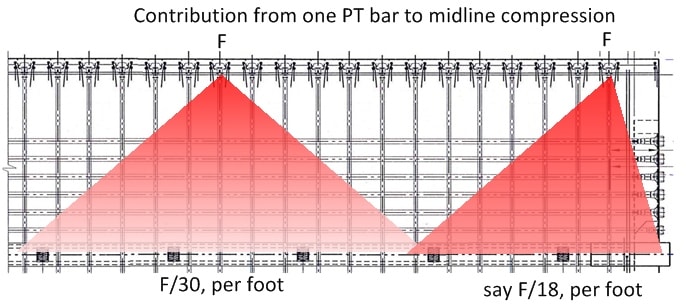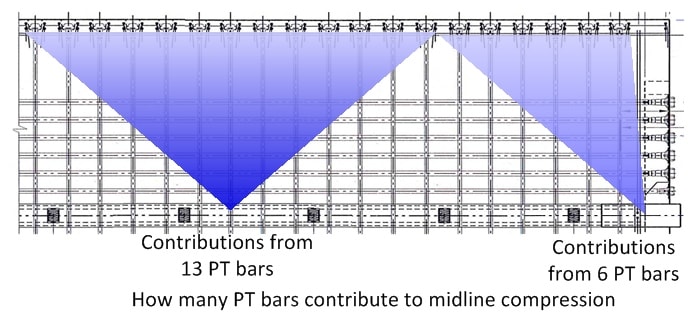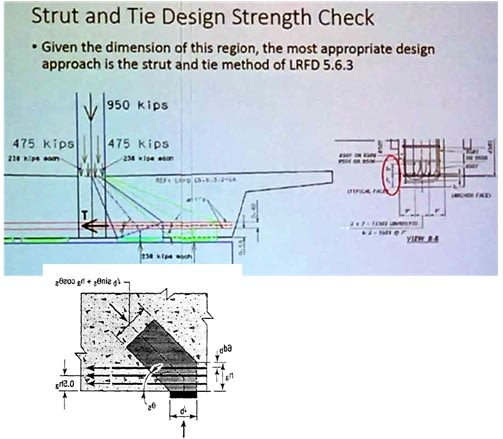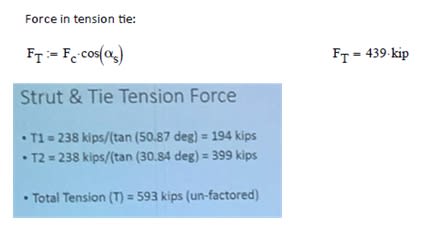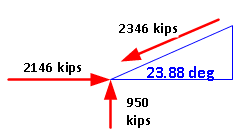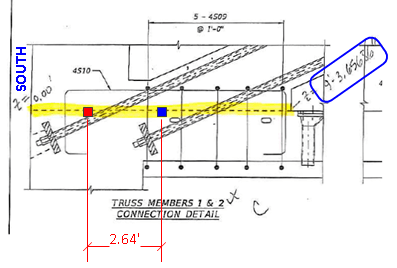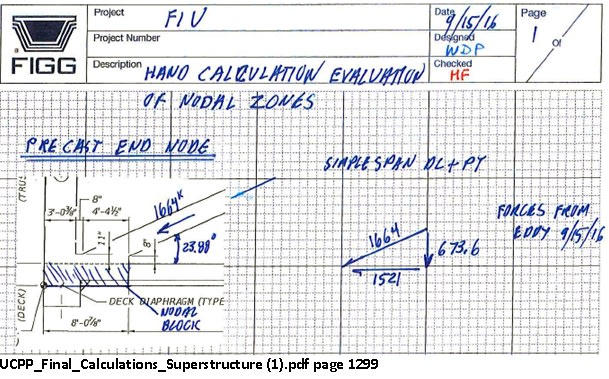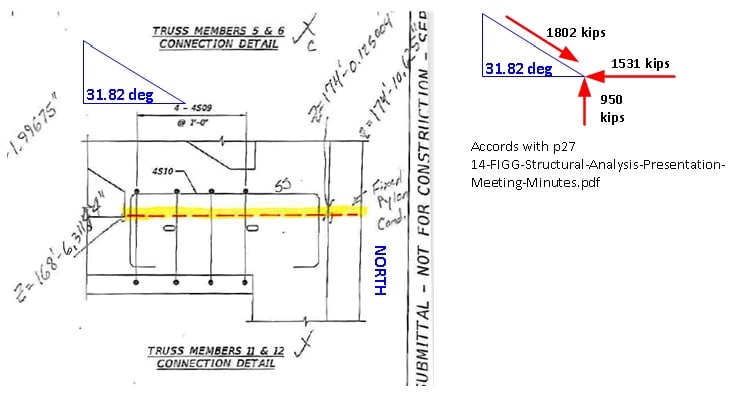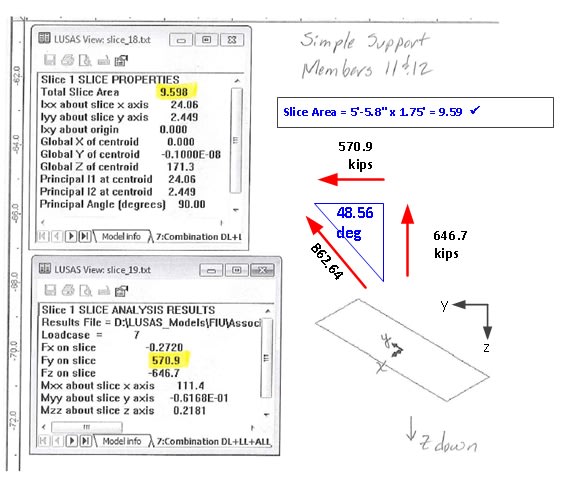As 3DDave has noted, pages 1382 through 1388 present some calculations that appear to calculate the forces at a horizontal shear plane that more or less matches the leading proposal for that actual failure location. But the numbers in those calculations don't match very well what we think we know about the bridge.
To try and correlate them with other numbers, I will look first at the #1/#2/deck connection, because those calcs almost correlate. Then look at the #11/#12/deck calcs.
First, here's what the forces should look like at 1/2/deck, I think.
These are based on assuming that there's a vertical component of 950 kips, half the weight of the bridge, through each of the end diagonal members. This matches the approach in the "presentation" PowerPoint.
Here's the shear plane referenced in the calcs:
(Yellow is in the pdf. Red and blue added by me.)
And the analysis results.
(Yellow is in the pdf. Red and blue added by me.)
No explicit angle is provided. However, I have added a sketch of the vectors from which to infer an angle.
The angle doesn't match what we might expect. But at least the vertical component is more than half the weight of the bridge. Possibly coincidentally, the horizontal component almost matches half the weight of the bridge. But is far less than the horizontal force one would expect from the angle of ~24 deg
A further oddity is the large Mxx value, which I assume is moment around the X axis. This perhaps corresponds to the offset between the center of the shear patch and the supporting column? (The small blue and red squares in the previous figure). 2.6ft x 1235 kips = 3211 ft-kips, very close to Mxx = 3113.
Comments: Very odd that the angle is so unexpectedly tall, but at least it has a vertical component that is in the same range as the half-weight of the bridge. (Though the concern of the analysis is to assess the horizontal component, that looks very understated.) I don't fully understand the analysis, but the force numbers are somewhere near the expected ballpark, if not actually in it.
For additional comparison, here's an excerpt from the analysis on page 1299:
Here again, puzzlingly, the vertical component is significantly less than the half-weight of the bridge.

